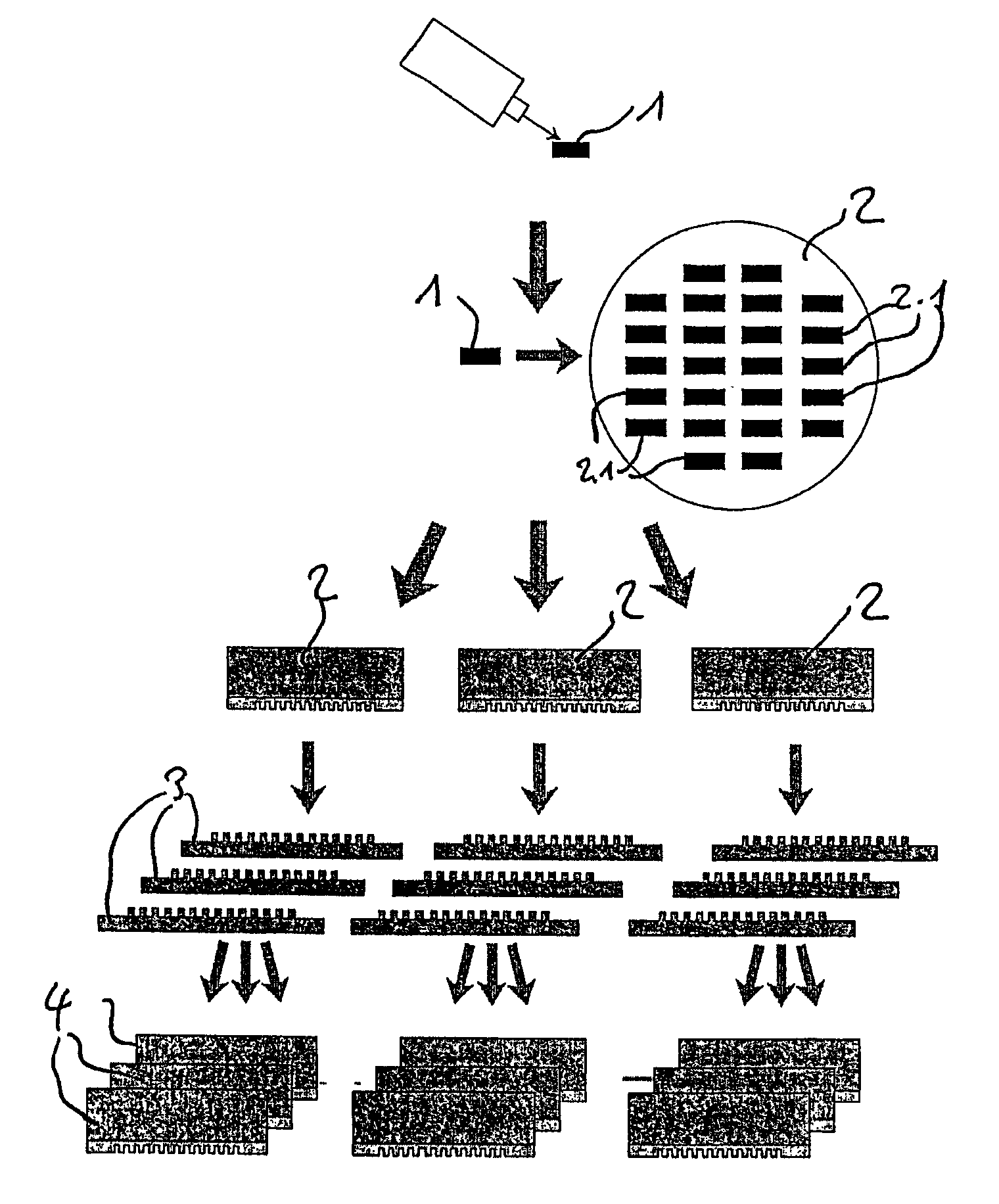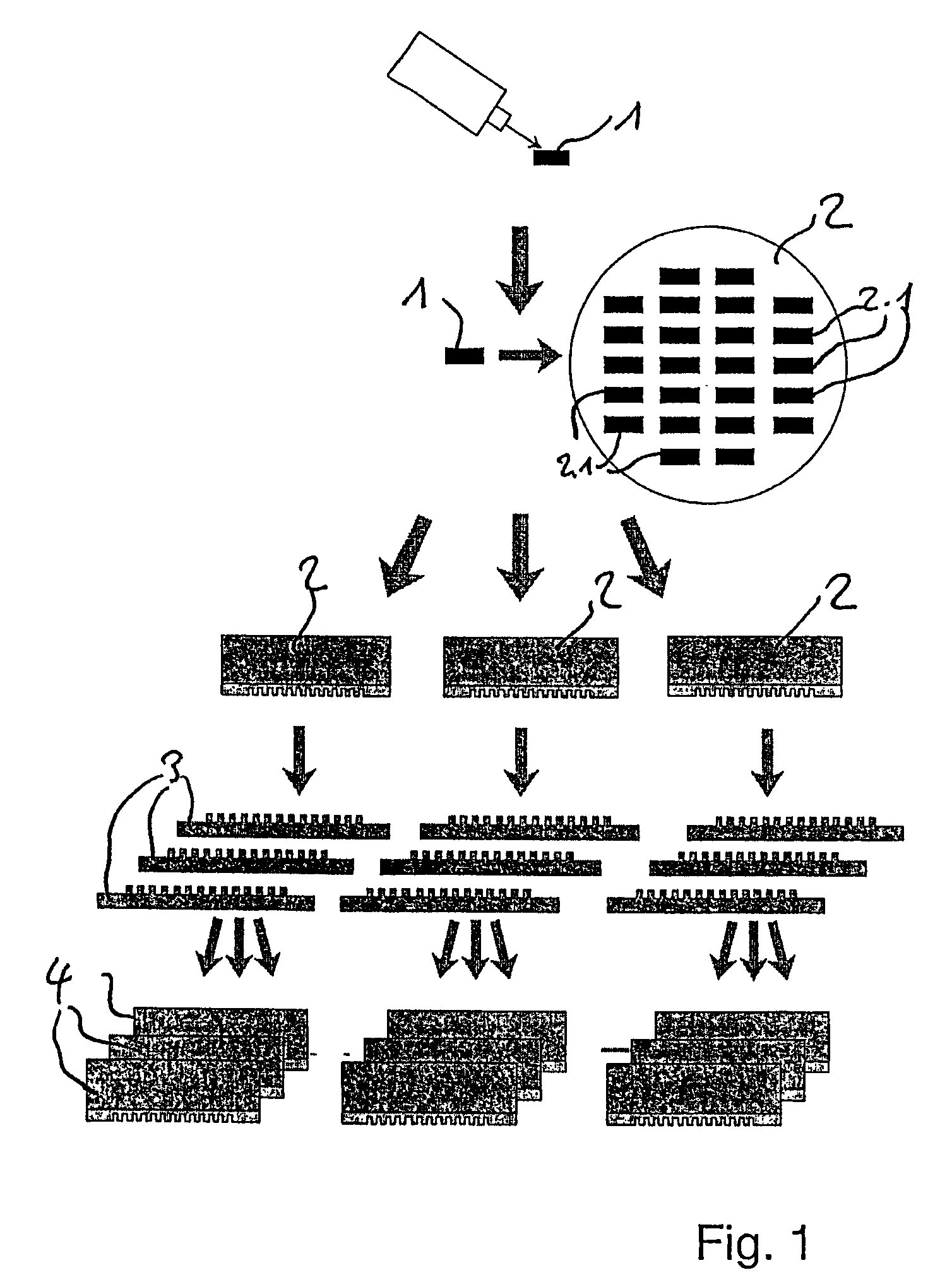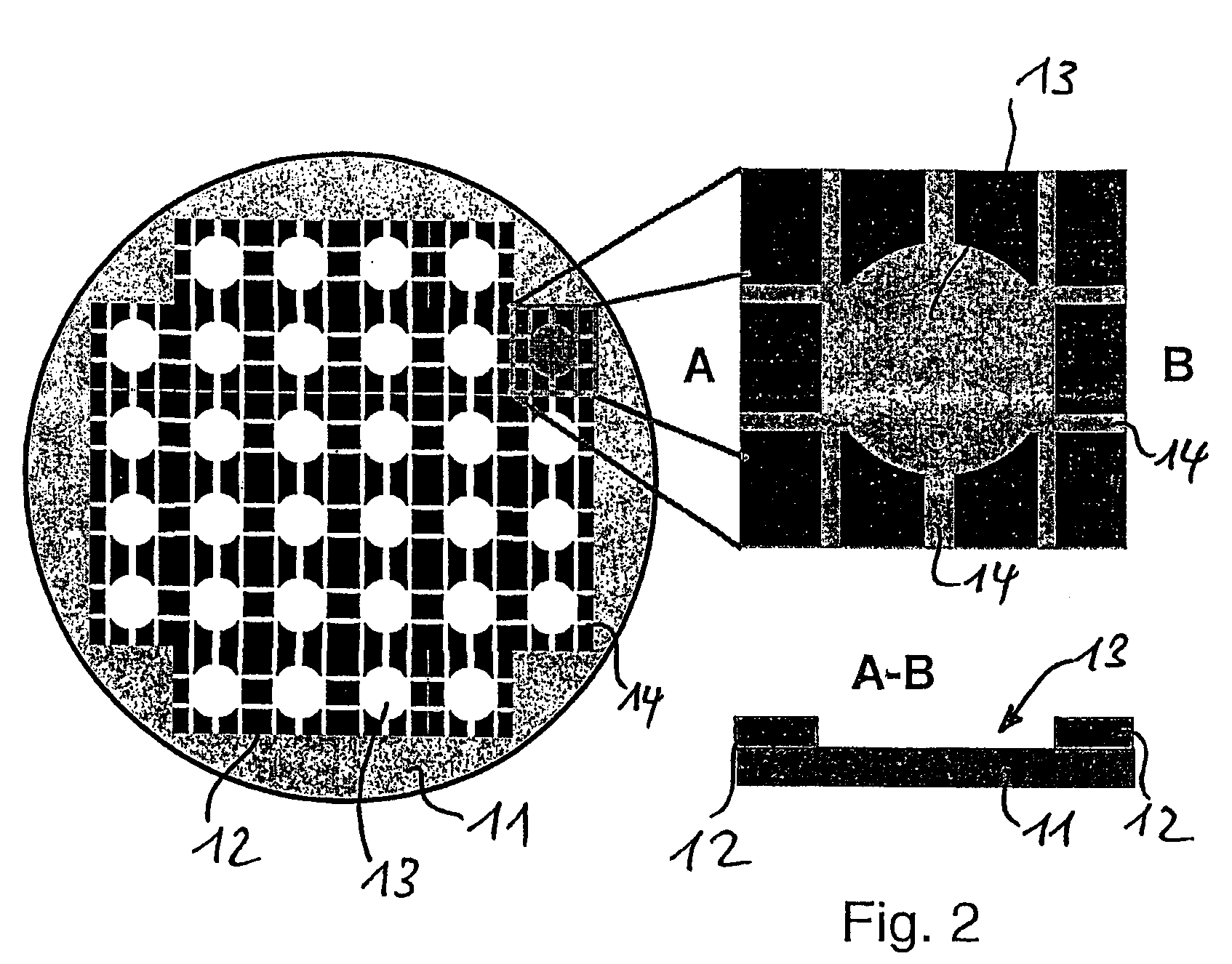Manufacturing a replication tool, sub-master or replica
- Summary
- Abstract
- Description
- Claims
- Application Information
AI Technical Summary
Benefits of technology
Problems solved by technology
Method used
Image
Examples
Embodiment Construction
[0061] In this text, ‘replication’ is used for a process of ‘casting’ in a broad sense, i.e. of making a ‘negative’ copy of a structured portion of the element to be replicated. When the resulting element is again replicated, this leads to a ‘positive’ copy of the initially replicated element. In this text, elements that comprise surface parts being a negative copy of portions of the final optical element to be manufactured are called ‘tools’, for example ‘replication tool’ or ‘master tool’. Elements including surface portions with a positive copy of the final element to be manufactured are called ‘master’, ‘sub-master’, or, for the final copy to be diced into the optical elements, ‘final replica’ or ‘replica’.
[0062]FIG. 1 shows an example of a generation process. In a first step, a master 1 is produced by any suitable method. In the figure, a laser beam writing process is symbolized. In a recombination process, to be described in more detail further below, a first generation repli...
PUM
| Property | Measurement | Unit |
|---|---|---|
| Thickness | aaaaa | aaaaa |
| Structure | aaaaa | aaaaa |
| Area | aaaaa | aaaaa |
Abstract
Description
Claims
Application Information
 Login to View More
Login to View More - R&D
- Intellectual Property
- Life Sciences
- Materials
- Tech Scout
- Unparalleled Data Quality
- Higher Quality Content
- 60% Fewer Hallucinations
Browse by: Latest US Patents, China's latest patents, Technical Efficacy Thesaurus, Application Domain, Technology Topic, Popular Technical Reports.
© 2025 PatSnap. All rights reserved.Legal|Privacy policy|Modern Slavery Act Transparency Statement|Sitemap|About US| Contact US: help@patsnap.com



